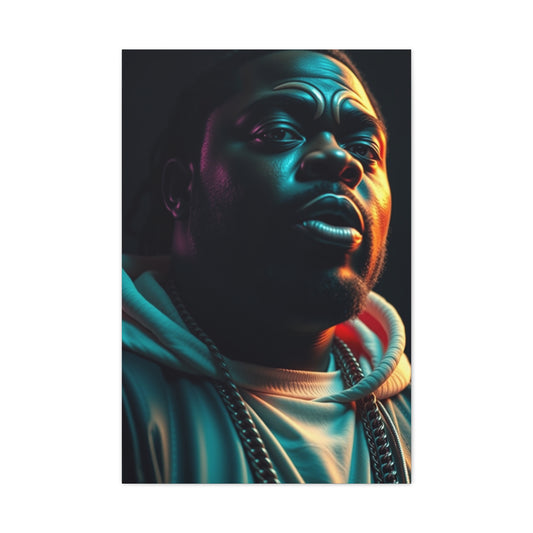Walls have always held the power to define a space. They act as silent witnesses to the life unfolding within a home, supporting, connecting, and separating spaces with purpose. But beyond their structural role, walls are also creative canvases that reflect personal style, mood, and lifestyle. A well-designed wall can be the difference between a room that feels unfinished and one that feels complete, inviting, and expressive. Among the many ways to elevate a home’s interior, wall showcase designs stand out as one of the most versatile and visually striking solutions. They merge beauty with function, offering a platform for display, storage, and storytelling.
A wall showcase design transforms a plain surface into an engaging focal point. It allows homeowners to express individuality through curated displays of art, memories, or collectibles while maintaining a sense of organization and harmony. In modern homes where space is often limited, wall showcases not only decorate but also optimize utility. They make use of vertical space efficiently, freeing up floor area while adding depth and texture to interiors. Whether sleek and minimal or ornate and traditional, a showcase can be tailored to suit any design aesthetic.
When you walk into a home, the walls often narrate stories of travels, celebrations, relationships, and passions. A thoughtfully designed wall showcase captures these narratives visually. Imagine walking into a living room where a wooden-framed display elegantly holds family photos, souvenirs from trips, and a few handcrafted ceramics. The arrangement instantly draws attention, evoking warmth and nostalgia. In contrast, a modern floating showcase with metal frames and open shelves creates a sophisticated, airy vibe that speaks of urban minimalism. Each design carries its own personality, shaping the energy of the room it occupies.
The living room, often considered the heart of a home, offers the perfect stage for wall showcase designs. Here, the décor must balance style and functionality. A wall showcase in the living area not only frames key decorative pieces but also helps organize everyday essentials like books, media gadgets, or decorative lighting. The secret lies in design harmony — choosing materials, colors, and proportions that complement the existing furniture and theme. A Scandinavian-inspired interior, for example, might feature white or ash wood floating shelves with concealed lighting to highlight textures and lines subtly. On the other hand, a traditional setting may embrace intricately carved wooden showcases, featuring glass-front cabinets that display fine china, idols, or heirlooms.
The placement of a wall showcase is just as crucial as its design. Ideally, it should enhance natural sightlines and complement architectural elements. A long hallway can be transformed with a linear wall-mounted showcase, turning an otherwise transitional space into an artistic gallery. A dining area can feel more connected and elegant with a wall showcase displaying crockery, glassware, and accent pieces that blend functionality with aesthetics. Bedrooms can feature compact wall showcases that hold photographs or collectibles, offering a personal, intimate touch. Even bathrooms and balconies, often overlooked, can benefit from tailored showcase units that combine storage with design flair.
Lighting is another key factor that breathes life into a wall showcase. Ambient and accent lighting highlight specific features, guiding the eye to what matters most. A soft LED strip along the edges of a glass showcase can create an ethereal glow, while spotlights can add drama by casting subtle shadows around decorative objects. When done thoughtfully, lighting turns a simple display into an engaging visual experience. In minimalist designs, concealed backlighting enhances the sense of depth and dimension without overwhelming the viewer.
Material choice defines the overall tone and longevity of a wall showcase. Wood remains a classic choice for its warmth and versatility. Teak, oak, walnut, or engineered wood can be customized with matte, gloss, or textured finishes to suit different interiors. Glass adds transparency and sophistication, allowing light to play through surfaces and making the room feel larger. Metal frames introduce a contemporary industrial feel, particularly when paired with concrete or exposed brick walls. MDF and laminates provide affordable options that can be easily molded into creative forms. For those inclined toward sustainability, reclaimed wood or bamboo makes for eco-friendly alternatives that still deliver visual appeal.
The essence of a great wall showcase lies in its composition — the balance of form, proportion, and negative space. Overcrowding a showcase diminishes its elegance. Instead, curating a few well-chosen objects allows each item to shine individually while maintaining coherence in the overall arrangement. Grouping objects by color, material, or theme can create a sense of rhythm. For instance, a mix of ceramic vases, books, and a small potted plant can form a visually appealing vignette. Layering — placing some items closer and others deeper — adds dimension and intrigue, preventing the display from appearing flat.
Cultural and regional influences also play a significant role in wall showcase design. In Indian homes, showcases often hold spiritual symbols, family heirlooms, and art that resonate with tradition. Carved wooden cabinets with lattice patterns or jaali work evoke heritage, while bold hues like deep red or royal blue bring vibrancy. In contrast, Western design sensibilities often emphasize minimalism, neutral palettes, and functional elegance. Blending both influences can create a rich, balanced interior — think of a sleek wooden wall showcase with subtle brass detailing, combining contemporary design with cultural warmth.
A wall showcase can also act as a design bridge between different rooms. When crafted with a consistent material palette, it visually ties spaces together, creating flow and continuity. For instance, a showcase that starts in the living room and subtly extends into the dining area through aligned shelving or matching finishes maintains design harmony throughout the home. Similarly, an open-concept layout can benefit from partition-style wall showcases that define spaces without fully enclosing them. This allows light and sightlines to pass freely while maintaining functional zoning.
Another growing trend in modern homes is the incorporation of multifunctional wall showcases. Homeowners are increasingly seeking designs that serve more than one purpose — a showcase that doubles as a work desk, a TV unit, or a reading nook. Modular units with adjustable shelves provide flexibility for rearranging displays as seasons or moods change. Some designs even integrate hidden storage for gadgets, wires, or personal items, maintaining a clean and organized look.
Customization is key in making a wall showcase truly personal. While ready-made designs are readily available, bespoke solutions ensure every detail aligns with the homeowner’s vision. From the depth of the shelves to the type of handles, from the color of the backing wall to the choice of lighting temperature, each element contributes to the final impact. Custom-made showcases also allow integration with other built-in elements like wardrobes, entertainment units, or study areas, creating a seamless visual flow across the home.
Textures and finishes add the final layer of sophistication to any wall showcase design. A matte wooden finish exudes understated charm, while high-gloss lacquered surfaces convey luxury and modernity. Frosted or tinted glass doors lend subtlety, concealing clutter while hinting at the contents inside. Stone cladding or wallpaper used as a backdrop within a showcase can enhance depth and visual interest. A well-chosen finish not only complements the décor but also determines how the showcase interacts with light and shadow throughout the day.
As homes evolve into personal sanctuaries, wall showcases are emerging as artistic statements — reflections of lifestyle, creativity, and emotion. They are not mere storage units but thoughtfully designed installations that transform living spaces into stories of beauty and belonging. A showcase can represent a family’s collective memories, artistic sensibilities, or even aspirations, making it one of the most expressive features in interior design.
The beauty of wall showcases lies in their adaptability. Whether one lives in a compact apartment or a sprawling villa, there’s always potential to incorporate them in meaningful ways. Small homes benefit from vertical showcase units that use every inch efficiently, while large homes can experiment with grand, multi-layered displays that anchor the space. Even in minimalist environments, a simple geometric shelf arrangement can create visual impact without clutter.
Ultimately, designing the perfect wall showcase is about striking the right balance between aesthetics and functionality. It’s about understanding the story you want your walls to tell — whether it’s one of tradition, modernity, playfulness, or serenity. With creativity, attention to detail, and thoughtful design choices, blank walls can be transformed into powerful visual narratives that enhance the very soul of a home.
Exploring Wall Showcase Designs That Define Every Room
A home tells its story through the elements it houses, and the wall showcases acts as one of its most expressive storytellers. Every room carries its distinct purpose and personality, and walls adapt beautifully to these variations. They are no longer seen as mere display units but as creative installations that enhance aesthetics while serving function. From the warmth of a living room to the intimacy of a bedroom, from a cheerful kid’s space to the practicality of a kitchen, wall showcase designs breathe character into every corner of a home. Understanding how to use them effectively in different spaces can completely redefine how a home looks and feels.
The living room remains the most popular place for wall showcases, and rightly so. It is the area where guests are welcomed, families gather, and moments unfold daily. Here, a wall showcase can set the tone for the entire house. A large modular wooden showcase can dominate a single accent wall, seamlessly combining open shelves and closed cabinets. It can display books, vases, or artifacts on open shelves while concealing electronics, remote controls, or cables inside cabinets. Incorporating a television into the design adds another layer of utility. In modern homes, these showcases are often integrated with sleek LED strips or recessed lighting to highlight décor elements without being overwhelming.
For those who prefer a more minimalist setting, floating wall showcases are an excellent choice. These sleek units create the illusion of more space while providing adequate display area. Imagine a set of symmetrical floating shelves crafted in matte walnut or ash wood, each adorned with minimal décor such as ceramic planters, framed art, or sculptural pieces. The effect is subtle yet impactful, offering sophistication and visual balance. Alternatively, asymmetrical arrangements lend a dynamic touch, perfect for contemporary interiors that embrace artistic spontaneity.
Hallways and transitional spaces often get overlooked in home décor, but they hold immense potential for creative wall showcase designs. Long corridors can be transformed into personal art galleries through built-in showcases featuring photographs, travel mementos, or curated collectibles. Slim, vertical wall-mounted showcases not only break monotony but also guide visual movement, leading one naturally from one room to another. Using mirrored panels or glass within these showcases can add depth, making narrow spaces appear more expansive and luminous.
In dining rooms, wall showcases play a crucial role in blending style with functionality. A well-designed unit can elegantly display fine china, glassware, and heirloom tableware while storing dining essentials discreetly. Materials like frosted glass, metal frames, and warm-toned wood add richness and warmth to the dining space. Lighting here is key—soft, warm illumination highlights the displayed items and sets a cozy mood for family dinners or gatherings. For open-concept homes, a wall showcase between the living and dining areas can act as a subtle divider while maintaining visual continuity.
Bedrooms invite a different kind of wall showcase — one that is intimate and personal. Instead of large, showy units, bedroom showcases lean toward compact, emotionally resonant designs. Floating shelves or built-in niches above the headboard can hold framed memories, small plants, or curated décor that aligns with the room’s mood. Wooden panels paired with soft lighting create a serene environment. For those who enjoy reading, a low horizontal showcase along the wall can double as a bookshelf and display area for small collectibles. In master bedrooms, modular showcases can be integrated with wardrobes or dressing tables for a cohesive and elegant look.
Children’s rooms, on the other hand, open the door to playful creativity. Wall showcases here need to be functional, safe, and imaginative. Rounded corners, soft edges, and vibrant colors help maintain a fun and cheerful vibe. These showcases serve as perfect organizers for toys, books, and art supplies while encouraging children to keep their space tidy. Adding chalkboard panels or open cubbies allows kids to personalize their space, making it interactive and inspiring. Some parents also prefer adjustable shelving units that evolve as the child grows, ensuring longevity and relevance.
Kitchens benefit immensely from wall showcase designs that combine practical storage with style. Instead of bulky overhead cabinets, open wall showcases or glass-front units make kitchens feel more spacious and inviting. Displaying fine dinnerware, spices in labeled jars, or elegant cookware turns everyday items into décor statements. Using materials like tempered glass, metal grids, or light wood ensures easy maintenance and durability. In small apartments, corner wall showcases help maximize space, keeping everything accessible while maintaining a neat aesthetic.
Bathrooms, too, can embrace subtle wall showcase designs that enhance luxury and utility. Floating shelves near mirrors or above sinks offer space for essentials like towels, toiletries, and décor accents such as candles or planters. Showcases with tinted glass or brass accents introduce sophistication. When paired with warm lighting, they create a spa-like ambience, turning an ordinary bathroom into a personal retreat. Waterproof laminates or treated wood ensure longevity without compromising beauty.
In home offices or creative studios, wall showcases take on a more functional role while retaining artistic flair. They serve as both inspiration and organizational tools. Floating shelves can display books, stationery, and inspirational art, while closed compartments keep documents hidden. Metal-framed shelving systems with geometric designs add structure and personality to workspaces. Introducing plants or textured back panels can soften the overall look, promoting focus and calmness. For hybrid workspaces, modular wall showcases that double as divider units help maintain privacy and order.
Outdoor areas such as balconies and terraces offer yet another opportunity to incorporate wall showcases. Weather-resistant materials like treated wood, rattan, or metal can be used to craft open units that hold potted plants, lanterns, or small sculptures. These designs merge natural and human-made aesthetics, making outdoor spaces feel more personalized and connected to the home’s overall design language. Vertical garden showcases, where plants climb through open lattice frames, are particularly popular for creating a lush, serene vibe in limited balcony spaces.
A well-planned wall showcase design enhances not only visual appeal but also spatial perception. In small homes, vertical wall showcases draw the eye upward, creating the illusion of higher ceilings and airier rooms. Horizontal designs, on the other hand, elongate compact rooms, giving them a more balanced and grounded feel. In large spaces, layering different depths and heights adds dimension, preventing expansiveness from feeling empty. The strategic play of proportions ensures harmony between form and function, regardless of room size.
For homes with mixed-use spaces, modular wall showcases offer unmatched flexibility. These customizable units can be rearranged, expanded, or simplified as needs evolve. In open-plan layouts, they serve as transitional features that define areas without obstructing movement or light. Using a consistent color palette or material finish across these showcases helps maintain cohesiveness throughout the home.
Texture and detailing further enhance the allure of wall showcases across different rooms. In a rustic setting, distressed wood or reclaimed panels evoke warmth and nostalgia. In modern apartments, smooth laminates, metal accents, and clean lines embody contemporary sensibilities. Layering different textures, such as wood paired with glass or stone against metal, introduces visual contrast and depth.
Another growing trend in wall showcase design is customization through craftsmanship. Homeowners increasingly prefer handcrafted pieces that reflect their identity. Intricately carved wooden panels, woven rattan inserts, or metal latticework transform simple designs into works of art. Incorporating artisanal touches allows a home to feel authentic, with every corner resonating with individuality.
Even the smallest details in wall showcase design matter — the choice of handles, hinges, or the finish of the shelf edges can influence the overall aesthetic. Minimalist designs often favor handle-less drawers and push-to-open mechanisms for seamless looks, while traditional designs might use ornate knobs or brass detailing for an added layer of luxury.
Ultimately, the success of wall showcase designs across different rooms depends on thoughtful integration with the home’s architecture and lifestyle needs. A cohesive approach ensures that each space tells its own story while remaining part of a unified whole. The living room showcase may display curated artifacts, the kitchen unit may highlight functional elegance, and the bedroom shelf may express intimacy and calm — together, they form the visual rhythm of the home.
Wall showcases, when designed with care and creativity, transcend their practical purpose. They transform empty walls into narratives of identity and inspiration, connecting different spaces through artistry and balance. By understanding each room’s essence and choosing materials, forms, and lighting accordingly, homeowners can ensure that every wall contributes meaningfully to the home’s overall beauty and comfort.
Crafting Elegance Through Materials, Textures, and Lighting in Wall Showcase Designs
Every remarkable wall showcase begins with a foundation of thoughtfully chosen materials and textures. These choices dictate not only the visual impression of the space but also its longevity, maintenance needs, and how it feels to inhabit. The beauty of modern wall showcases lies in their adaptability; they can be as opulent or as understated as one desires, shaped entirely by the materials and finishes selected. When combined with the right lighting, these showcases transcend mere utility and become immersive visual experiences that shape the soul of a home.
Wood remains the timeless favorite in wall showcase design. It offers a warmth and familiarity that other materials rarely achieve. Depending on the type of wood, the look can range from rustic and earthy to sleek and contemporary. Oak and teak, for instance, are perfect for traditional or transitional homes, offering grainy textures and rich hues that evoke a sense of natural luxury. Walnut and maple, with their smooth finishes and lighter tones, lend themselves beautifully to Scandinavian or modern interiors. Engineered wood, MDF, and laminates provide cost-effective alternatives without sacrificing elegance. For those who desire durability and moisture resistance, veneered plywood remains a reliable choice, combining strength with visual appeal.
The treatment of wood surfaces further defines their character. Matte finishes exude sophistication and pair well with minimalist spaces, while high-gloss veneers add a polished, luxurious touch ideal for urban apartments. Brushed or distressed finishes introduce texture, giving the showcase a more lived-in, organic appearance. Layering different wood tones can create contrast — for example, combining dark walnut shelves with a light oak frame can subtly emphasize depth and dimension.
Glass, another essential material in wall showcase design, adds lightness and transparency. It allows displayed objects to shine while maintaining a clean, uncluttered aesthetic. Clear glass shelves or doors create openness and allow colors and lighting to play freely, while frosted or tinted glass introduces a sense of privacy and mystery. Fluted glass, in particular, has become a popular choice for its ability to diffuse light beautifully, softening reflections and adding texture. Incorporating glass panels within wooden or metal frames balances structure with delicacy, making it ideal for both modern and classic interiors.
Metal, often used as an accent material, contributes strength, shine, and a modern industrial vibe. Black iron or powder-coated steel frames offer a clean, minimal aesthetic, while brass, copper, or gold accents evoke sophistication and glamour. The interplay of metal and wood is particularly striking, merging organic warmth with sleek precision. In open shelving designs, metal frameworks allow for slim, geometric lines that appear weightless while providing structural integrity. Brushed or matte metallic finishes work well for subtle elegance, while polished or patina-treated surfaces bring drama and character.
Stone and marble introduce a sense of permanence and grandeur. Incorporating stone back panels or marble inlays elevates wall showcases into statement features. White Carrara marble exudes elegance and works well in light-toned interiors, while black or green marble introduces contrast and luxury. For rustic homes, textured stone cladding or slate tiles add depth and tactile richness. The coolness of stone complements the warmth of wood, creating balanced visual tension that enhances spatial character.
In recent years, sustainable materials have become increasingly significant in wall showcase design. Bamboo, reclaimed wood, cork, and composite materials made from recycled elements reflect a growing awareness of environmental responsibility. Beyond aesthetics, these materials tell a story of mindful living — they embody authenticity, craftsmanship, and ethical design. Bamboo, in particular, stands out for its strength and flexibility, making it ideal for creating sleek, lightweight shelving with a natural tone.
Texture plays a central role in defining how a wall showcases interacts with its surroundings. Smooth, polished surfaces reflect light and create an airy atmosphere, while textured materials like rough wood, woven cane, or ribbed metal add depth and tactile intrigue. Layering textures within a single design — such as pairing a matte wooden frame with glossy glass doors — enhances visual complexity and prevents monotony. Textural variety can also help define zones within a room; for example, a softly textured wooden showcase can visually warm up a cool-toned minimalist living area.
Lighting is perhaps the most transformative element of all. Even the most beautifully crafted showcase can fall flat without the right illumination. Lighting within or around wall showcases creates mood, drama, and focus. Ambient lighting sets the overall tone of the room, while accent lighting highlights specific features or objects. LED strip lighting, recessed spotlights, and downlights are the most popular choices for modern wall showcases.
LED strip lights, discreetly installed along the edges or within shelves, create a soft, even glow that enhances the materials’ textures. Warm white lighting emphasizes wood’s natural warmth, while cool white lighting accentuates glass, metal, or marble. Recessed spotlights, on the other hand, provide focused beams of light that can be directed toward specific objects, such as art pieces or decorative sculptures. For open shelving systems, under-shelf lighting adds a floating effect, making the entire structure appear weightless and refined.
Color temperature plays a subtle yet critical role in lighting design. Warm lighting (2700K–3000K) evokes coziness and intimacy, ideal for living rooms and bedrooms, whereas neutral to cool lighting (3500K–5000K) enhances clarity, making it suitable for kitchens, workspaces, or display-heavy areas. The key lies in maintaining balance—too much brightness can flatten the display, while too little can obscure details. Dimmable lighting options offer flexibility, allowing homeowners to adjust intensity according to time of day or mood.
Indirect lighting can also be used creatively to highlight textures. For instance, light washing down a textured stone backdrop creates a play of shadows, amplifying the depth of the surface. Backlit panels made of translucent materials like onyx or acrylic can transform a simple wall showcase into an ambient focal point. Similarly, concealed LED lighting behind frosted glass or open niches creates an ethereal glow that enhances visual harmony.
Color coordination between materials, textures, and lighting ensures aesthetic continuity. A dark-toned wooden showcase illuminated with warm lighting emits a cozy, inviting aura, while a white or pastel-toned unit paired with cool illumination feels crisp and modern. Contrasts can be intentionally designed — a deep, navy showcase highlighted with golden light, for instance, creates a luxurious statement that draws attention without overwhelming.
Beyond fixed materials, wall showcases can also incorporate dynamic elements. Sliding panels, adjustable shelves, or modular inserts allow flexibility in function and form. For instance, a glass-front modular showcase can transition from a minimalist art display to a practical storage space with a few simple adjustments. Integrating hidden lighting channels or wireless charging features adds convenience without clutter.
Finishing details define craftsmanship. Edge profiles, joinery, and hardware selection speak volumes about quality. Mitred edges offer seamless transitions, while visible joints celebrate honesty in construction. Push-to-open mechanisms and concealed hinges provide a clean, modern aesthetic, while exposed brass hardware adds vintage charm. Even the back panel design matters — fabric-wrapped or wallpapered backgrounds can add color and pattern, creating a stunning visual frame for displayed items.
In luxury interiors, material layering and craftsmanship merge to create one-of-a-kind showcases. Combining textured leather panels, tinted glass, and brushed metal trims transforms an ordinary wall unit into a bespoke masterpiece. For heritage homes, hand-carved wood with intricate patterns maintains cultural authenticity while blending with contemporary sensibilities.
The interplay between materials, textures, and lighting ultimately determines how a wall showcase feels within its environment. A well-designed unit doesn’t just display objects; it becomes an object of admiration in itself. Each choice — from the grain of wood to the hue of light — contributes to a story of taste, lifestyle, and emotion.
Modern homeowners increasingly seek personalization through subtle details rather than overt opulence. A well-lit oak and glass showcase with clean lines may express simplicity and serenity, while a marble-backed brass-framed unit might symbolize confidence and luxury. The versatility of materials ensures that wall showcases can adapt to any design philosophy — minimalist, industrial, rustic, or eclectic — and remain timeless.
Ultimately, the success of material and lighting combinations in wall showcase design lies in achieving equilibrium. The materials must complement the room’s architecture and palette; the textures should engage the senses; the lighting must bring everything to life. When these elements harmonize, the result is more than functional furniture — it’s a visual symphony that anchors the aesthetic of the entire home.
Personalizing Wall Showcase Designs Through Style, Theme, and Creative Expression
Designing a wall showcase is not just about storage or decoration — it’s about storytelling. Every home carries its own personality, a reflection of those who live in it. The wall showcase becomes a canvas that narrates this story through design, color, texture, and composition. Whether your taste leans toward the simplicity of minimalism, the vibrancy of bohemian flair, or the timeless elegance of traditional motifs, the key lies in personalizing the showcase to harmonize with your home’s mood and your individual identity.
A good starting point is to define the overarching style that resonates with your home. The style of your wall showcase should feel like an organic extension of the room it occupies. For example, if your living space is designed around Scandinavian principles — light woods, neutral tones, and uncluttered openness — your wall showcase can embody the same spirit. Opt for floating shelves in birch or pine, clean geometric lines, and subtle LED lighting that enhances the natural warmth of the wood. Decor pieces like ceramic vases, woven baskets, or minimalist photo frames will maintain the understated yet cozy aesthetic.
In contrast, an industrial-style home thrives on raw materials and an edgy vibe. Wall showcases here can incorporate metal frames, exposed bolts, and reclaimed wood surfaces. A matte black metal structure with rugged wooden shelves can make a bold statement against a concrete or exposed brick wall. Decorative elements such as vintage clocks, wire sculptures, and Edison bulbs can complete the look. The key is to celebrate imperfections — visible welds, rough textures, and natural variations in color make the industrial aesthetic feel authentic and alive.
For those drawn to contemporary luxury, a more refined, glossy showcase can elevate the sophistication of the space. Imagine sleek high-gloss lacquered panels paired with tinted glass shelves and soft backlighting. Incorporating metallic trims — gold, rose gold, or brushed bronze — adds a sense of opulence. This kind of design works beautifully in modern apartments, especially when used to display art pieces, designer collectibles, or fine books. The harmony between sheen, symmetry, and soft illumination defines the visual experience.
Traditional and classic homes call for designs rooted in craftsmanship and ornamental beauty. Intricately carved wooden showcases, often in darker tones like walnut or mahogany, resonate with timeless charm. Decorative moldings, arches, and latticework add character and narrative depth. These showcases often feature closed cabinets combined with open display areas, allowing for both storage and exhibition. Pairing them with antique accents — brass figurines, porcelain plates, or framed tapestries — brings an old-world grace that never feels outdated.
Rustic or farmhouse-inspired interiors, on the other hand, emphasize warmth and authenticity. Here, reclaimed wood, wicker, and distressed finishes bring a sense of nostalgia. A rustic wall showcase can feature open shelves with uneven planks and iron brackets. Accessories like earthen pots, candle holders, and handcrafted textiles enrich the earthy ambiance. Lighting should be warm and soft, mimicking natural sunlight. A rustic showcase often becomes the heart of the room, where stories and memories converge through every object displayed.
For eclectic spaces, creativity knows no bounds. An eclectic wall showcase combines multiple materials, patterns, and colors in a way that feels artistic rather than chaotic. You might mix wood with glass, metal with fabric, or introduce pops of color against a neutral wall. The trick lies in curating balance — ensuring that while each element stands out, they all speak the same visual language. For instance, pairing a turquoise shelf with brass handles and neutral-toned ceramics creates a curated yet spontaneous look. Eclectic designs allow homeowners to express individuality freely, reflecting travel souvenirs, art, and personal artifacts that define their journey.
The Bohemian-style wall showcases creative freedom and cultural richness. Open wooden shelving, macramé hangings, woven baskets, and handcrafted pottery create a relaxed, inviting atmosphere. Bright colors, layered textures, and natural materials dominate this aesthetic. A bohemian showcase may host everything from indoor plants and seashells to vibrant books and tapestries. Lighting plays a huge role here — warm string lights or embedded LEDs can create a cozy, whimsical glow that enhances the soulful character of the space.
Minimalist designs appeal to those who prefer simplicity, order, and serenity. A minimalist wall showcase emphasizes space rather than filling it. Clean lines, neutral colors, and hidden storage define its essence. Open shelves are often sparsely decorated with carefully selected pieces — a single sculpture, a small plant, or a framed artwork. The minimalist philosophy encourages mindful living, where each item displayed has a purpose or emotional value. The lighting here should be subtle, enhancing clarity without drawing too much attention.
For modern Indian homes, blending traditional and contemporary elements often yields the most captivating results. A showcase might feature sleek wooden panels with jaali (lattice) patterns or carved motifs subtly integrated into a modern frame. Brass or copper inlays add an ethnic touch, while the structure remains clean and functional. Displaying artifacts like diyas, idols, and hand-painted pottery alongside contemporary art or photographs creates a rich dialogue between past and present. This fusion approach allows homeowners to celebrate heritage while embracing modern aesthetics.
Thematic wall showcases are another exciting approach to personalization. A travel-themed showcase, for instance, can feature souvenirs, framed maps, and miniature globes. Shelves can be lined with mementos from different destinations, narrating stories of exploration. A nature-themed showcase might display botanical prints, terrariums, and natural stones, evoking calm and connection with the outdoors. Similarly, an art-themed display can highlight sketches, sculptures, and handcrafted items, turning the wall into a mini gallery.
Bookshelves, when designed as part of a wall showcase, add intellectual and emotional depth. Books, whether arranged by color, size, or genre, create visual rhythm and personality. Combining books with decor pieces such as candles, vases, or framed quotes prevents monotony. A mix of open and closed compartments also adds variety, ensuring that the space remains dynamic and adaptable.
In bedrooms, wall showcases can serve as both functional and aesthetic focal points. Floating bedside shelves, recessed displays above headboards, or symmetrical shelving units behind the bed offer practical storage while enhancing the visual appeal. In children’s rooms, colorful wall showcases filled with toys, storybooks, and art supplies bring vibrancy and encourage organization. Using adjustable shelves allows flexibility as the child grows, making the space both playful and adaptable.
Bathrooms, too, can benefit from subtle wall showcases. Compact recessed shelves with glass fronts or open niches above sinks or bathtubs can store essentials while maintaining a clean, organized look. When paired with moisture-resistant materials like treated wood or acrylic, these showcases remain durable and stylish. Adding soft backlighting enhances relaxation, creating a spa-like environment.
In kitchens and dining areas, wall showcases often merge practicality with aesthetics. Open shelving for crockery, glassware, or spices can be both functional and decorative. Glass-front cabinets displaying fine china or cutlery lend sophistication, while floating shelves with integrated lighting offer a modern appeal. Mixing materials — such as wood with frosted glass or metal — creates contrast and adds texture. When designed carefully, kitchen showcases can turn everyday storage into a visually pleasing experience.
For hallways and entryways, showcases act as welcoming features. A slim wall-mounted unit with hooks for keys, shelves for accessories, or niches for art pieces can transform even the smallest corridor into a stylish transition zone. Mirrors incorporated into these showcases add depth and light, making narrow spaces appear larger.
When personalizing a wall showcase, proportion and balance are crucial. Large, open walls benefit from horizontal designs that span across, while smaller spaces look better with vertical or modular layouts. Negative space — the empty area between objects — is just as important as the items displayed. Too many elements can overwhelm the eye, whereas carefully spaced arrangements create calm and focus.
The use of color can dramatically change the impact of a wall showcase. A bold-colored back panel contrasts beautifully against neutral decor, while monochromatic tones emphasize simplicity. Accent lighting in complementary hues can subtly shift the mood — for example, warm amber tones enhance coziness, while cool blue lighting feels modern and crisp.
Ultimately, personalizing a wall showcase means blending function, aesthetics, and emotion. It’s about creating a focal point that doesn’t just display objects but reflects the story of your life, your travels, and your passions. Each shelf, texture, and hue can evoke memories and aspirations, turning walls into living art. When designed thoughtfully, a wall showcase becomes much more than furniture — it becomes an evolving expression of who you are.
Functional Wall Showcase Ideas for Modern Living Spaces
A well-designed wall showcase goes beyond aesthetics; it fulfills a functional purpose that supports the lifestyle of the homeowner. The true beauty of modern interiors lies in how efficiently they combine visual elegance with everyday practicality. Wall showcases today are not just static display units; they are dynamic design features that help organize, highlight, and enhance living spaces. When carefully planned, they can define zones within open layouts, maximize storage in compact homes, and offer a seamless balance between decor and function.
Modern living spaces, especially in urban homes, often demand smart design solutions due to limited square footage. The wall showcases a perfect opportunity to utilize vertical space effectively. Instead of crowding the floor with bulky cabinets and side tables, integrating floating or recessed showcases onto the walls can free up walking areas while maintaining storage capacity. This vertical optimization makes the room appear more open, breathable, and uncluttered.
In open-concept living rooms where the dining, lounge, and kitchen areas coexist, wall showcases can be used to subtly demarcate zones without breaking the flow. For instance, a wall showcase placed behind a sofa can display decorative pieces and books, while its lower section can include concealed drawers for remotes or other essentials. The same principle can be applied near dining areas — floating shelves with a small wine rack and soft lighting can turn a simple wall into a sophisticated dining focal point.
Functionality also extends to how accessible and adaptable a wall showcase is. Adjustable shelving systems allow homeowners to modify shelf heights to accommodate different-sized objects, from tall vases to small collectibles. Incorporating sliding glass doors or concealed panels adds flexibility, enabling users to hide clutter when needed. For households with children, rounded edges, soft-close hinges, and shatterproof materials make the design safe without compromising on beauty.
Entertainment walls are among the most functional applications of modern showcases. Instead of a simple TV mount, a complete entertainment unit can feature a combination of open niches, drawers, and shelves that organize devices, speakers, and decor seamlessly. Integrated cable management keeps wires hidden, maintaining a sleek, clean look. To prevent the setup from appearing heavy, designers often balance closed storage at the bottom with open shelving above, achieving both symmetry and utility.
In compact apartments or studio homes, multifunctional wall showcases are essential. Foldable desks, pull-out drawers, and modular shelving can transform one corner of the room into a workspace, a dining spot, or even a mini library. Imagine a wall showcase that conceals a fold-down table with storage compartments for stationery or books — it maximizes every inch of the wall while keeping the space organized and visually light.
Bedrooms also benefit greatly from functional wall showcases. Headboard walls can incorporate recessed shelving with subtle lighting for bedtime reading or to display keepsakes. Floating nightstands built into the wall eliminate the need for separate furniture pieces. For a luxurious touch, consider incorporating mirrored panels or backlighting behind the headboard showcase. This not only amplifies light and space but also introduces a calm, reflective mood conducive to rest.
Kitchens are another area where wall showcases prove invaluable. Open shelving can be used to display stylish crockery or spice jars, while closed cabinets handle everyday essentials. A combination of glass-front panels and solid doors helps strike a balance between display and storage. Incorporating LED strips beneath each shelf can illuminate countertops, making the workspace brighter and more inviting. The design should ensure ease of cleaning and access, emphasizing functionality over ornamental complexity.
In dining spaces, wall showcases are an opportunity to create visual drama. Built-in units can feature display shelves for glassware, ceramics, and serving sets. Mirrored back panels enhance depth, and integrated lighting highlights the collection. Designers often pair these units with statement textures like marble, veneer, or high-gloss laminates for a polished, refined appearance. A buffet counter below the display area can double as serving or storage space during gatherings, adding to the functionality.
Entryways and corridors, though often overlooked, are ideal spots for practical wall showcases. A slim, vertical showcase near the entrance can hold essentials like keys, mail, or decorative planters. In longer hallways, wall-mounted cabinets with open shelves above create visual interest and provide storage for shoes, accessories, or seasonal decor. Mirrors, when incorporated into these units, make the space appear larger and more luminous.
Bathrooms, while unconventional for showcases, benefit from thoughtful design. Floating wall showcases above vanities or beside mirrors offer storage for toiletries, towels, and decor elements like candles or potted plants. Frosted glass panels or treated wood ensure durability in humid conditions. For smaller bathrooms, recessed shelving built into the wall saves floor space while maintaining a clutter-free look.
Children’s rooms, where function meets creativity, demand flexible wall showcase ideas. Modular cubes or colorful shelves can store books, toys, and art supplies while adding playful character. Chalkboard or magnetic panels integrated into the wall showcase encourage creativity and organization. As children grow, the layout can evolve — adjustable shelves and removable boxes make the system adaptable over time.
A growing trend in modern design is the use of concealed or “hidden” showcases. These are sleek wall panels that, when closed, look like plain walls but open to reveal neatly arranged storage or display areas. In minimalist homes, hidden showcases maintain a streamlined aesthetic while ensuring practicality. Such designs work beautifully in hallways, media walls, and home offices where clutter needs to be contained discreetly.
Home offices or study nooks can utilize wall showcases as part of their layout. Floating shelves for books, decor, and essential tools create a professional yet inviting environment. Designers often incorporate closed compartments for files and stationery alongside open spaces for decorative objects, striking a balance between formality and creativity. Subtle backlighting or integrated desk lamps enhance focus and comfort.
Lighting is one of the most powerful elements in functional showcase design. Inbuilt LEDs or spotlights not only highlight display items but also serve as ambient light sources, reducing the need for additional fixtures. A well-lit wall showcase can replace traditional lamps, especially in smaller homes where space is limited. Using dimmable lights allows for mood control — brighter for practical use, softer for a cozy atmosphere.
Sustainability plays a significant role in functional modern design. Eco-friendly materials such as bamboo, reclaimed wood, and low-VOC finishes align with contemporary environmental consciousness. These materials bring warmth and character while ensuring longevity. Incorporating greenery, such as small potted plants or vertical garden segments within showcases, introduces freshness and natural vibrancy into the home.
Functionality is also about ergonomics — the comfort and ease with which the showcase interacts with daily life. Shelves should be positioned at accessible heights, especially for items used frequently. Heavier items should always be placed at lower levels for safety, while decorative pieces can occupy higher shelves. Designers increasingly integrate motion-sensor lights or push-to-open mechanisms, eliminating the need for handles and enhancing convenience.
Wall showcases can also reflect digital innovation. Smart homes now feature showcases with built-in speakers, charging docks, and even touch-control lighting. A showcase can conceal routers, cables, and devices neatly, maintaining an organized aesthetic. With the rise of remote work and digital living, such multifunctional showcases redefine how technology and design coexist.
When it comes to color and finish, functional wall showcases tend to favor neutral or muted palettes that adapt easily to various decor updates over time. Matte finishes reduce glare, while glossy surfaces can enhance light reflection in dimly lit rooms. Combining contrasting textures — for instance, matte wood with glass or metallic accents — adds depth without compromising simplicity.
The secret to an effective wall showcase lies in understanding the user’s routine. Every element should serve a purpose, whether it’s convenience, aesthetics, or emotional value. When designed thoughtfully, functional wall showcases become integral to daily living rather than mere decorative afterthoughts. They merge creativity with utility, ensuring that homes are not only beautiful but also intuitively designed to make life simpler and more organized.
Artistic Expressions and Personalized Innovations in Wall Showcase Designs
Every home tells a story, and the walls within it serve as the silent narrators of that tale. Wall showcases, more than just storage or decorative structures, have evolved into expressive design features that articulate a homeowner’s identity, lifestyle, and creativity. The modern wall showcase is not merely a place to exhibit possessions but a dynamic composition that weaves together art, innovation, and emotion. It bridges functionality with individuality, turning blank walls into personal galleries that celebrate both aesthetics and imagination.
In contemporary design philosophy, personalization is key. A wall showcase becomes a reflection of one’s personality when crafted with an understanding of how its elements — shape, color, material, and placement — interact with the emotions and rhythm of the home. Some people may prefer the charm of rustic wooden frames with open shelves that display handcrafted pottery or books, while others might lean toward sleek glass structures paired with metallic finishes for a modern, minimalistic statement. Every material, texture, and silhouette contributes to the visual narrative, giving each space a distinct soul.
Artistry plays a significant role in the conceptualization of wall showcase designs. Designers now treat these units as installations rather than furniture. By experimenting with asymmetry, geometric layering, or sculptural forms, wall showcases transcend their utilitarian purpose. A zigzag pattern shelf running along a feature wall can double as a piece of visual art. A curved, built-in niche finished in matte marble can highlight sculptures or vases, creating depth and visual intrigue. Such designs add rhythm and flow to interiors, transforming static walls into living elements of design.
Lighting remains an artistic tool in this transformation. Beyond mere illumination, it accentuates mood and texture. Subtle backlighting or edge lighting behind floating shelves creates a soft halo that gives the illusion of weightlessness. Spotlighting a specific sculpture or art piece evokes a museum-like sophistication. For a more intimate, ambient effect, designers often combine warm diffused lights with textured panels, producing soft shadows that dance across the surface. The interplay between light and shadow can completely redefine the spatial perception of a room.
Customization is another evolving dimension of modern wall showcases. Homeowners now seek bespoke designs that respond to their lifestyles rather than adopting mass-produced models. A family that loves to read may choose a library-style wall showcase that integrates bookshelves, cozy lighting, and even a fold-down reading nook. A music enthusiast might create a wall display for instruments or vinyl records, blending function with passion. Such personalized concepts transform the wall into a living part of daily life — one that evolves with time and personal growth.
Innovative use of materials further enhances the individuality of wall showcases. Designers today blend contrasting elements such as wood with metal, glass with concrete, or fabric with resin to create tactile diversity. Textured panels in stone or embossed leather can be paired with matte finishes for an elevated aesthetic. The use of recycled or eco-friendly materials brings sustainability into focus without compromising luxury. This conscious design approach appeals to environmentally aware homeowners who want their interiors to reflect ethical choices as well as style.
Incorporating technology has also reshaped how wall showcases function. Smart lighting systems can adjust brightness based on natural daylight or user preference. Hidden compartments equipped with wireless chargers or cable management systems maintain neatness while supporting modern gadgets. Some designers have even begun integrating digital display screens into showcases, enabling rotating art exhibitions or personalized photo slideshows. Such integrations create a fusion between the tactile world of design and the digital realm of modern living.
Cultural influences often find their way into artistic wall showcase design. In homes inspired by global aesthetics, one might see Moroccan latticework framing open niches, Japanese-inspired minimalism emphasizing clean lines and natural wood tones, or Indian motifs celebrating intricate carvings and rich hues. These cross-cultural design expressions create visual harmony between global inspiration and local craftsmanship, making each wall a conversation between tradition and innovation.
Emotion plays a subtle yet powerful role in shaping the perception of wall showcases. The way objects are displayed — the family photographs, heirlooms, souvenirs, and artworks — tells an intimate story. A well-curated wall showcase evokes nostalgia, pride, or tranquility depending on its arrangement. When thoughtfully composed, these walls become more than decor; they become a mirror to one’s memories and aspirations. A minimalist homeowner may prefer space as a form of expression, while a maximalist may fill every shelf with vibrant artifacts, celebrating abundance and creativity.
Spatial psychology also influences artistic showcase design. Rounded forms and soft lighting evoke warmth and safety, making living rooms and bedrooms feel inviting. Linear arrangements and sharp geometries, on the other hand, express order and sophistication, suitable for offices or formal areas. Colors also play a vital role — muted tones create calm, while bold contrasts energize the environment. Each decision in material and composition is a deliberate act of storytelling through design.
Artistic showcases extend beyond the home’s interior walls. In terraces, patios, or outdoor lounges, weather-resistant showcases can be crafted using treated wood or metal. These outdoor walls can display planters, sculptures, or lanterns, seamlessly connecting interior elegance with nature’s serenity. The design possibilities here are endless — from minimalist vertical gardens to intricate mosaic-backed display walls, the fusion of art and function continues to evolve.
Another creative trend gaining momentum is modular showcase design. Instead of fixed installations, modular systems allow users to rearrange, expand, or reconfigure shelves as per changing needs. This adaptability reflects modern living, where mobility and flexibility are valued. Each module can stand as an individual art piece or merge with others to form a larger structure, encouraging playful creativity and personal involvement in design.
Craftsmanship lies at the heart of every artistic showcase. Handmade details such as carved edges, woven panels, or hand-painted tiles add authenticity and warmth that machines cannot replicate. These subtle imperfections become marks of human touch, giving the space depth and emotion. Many homeowners now commission local artisans to create customized pieces that not only support traditional craftsmanship but also add exclusivity to their interiors.
The emotional connection to a space grows stronger when design invites participation. Personal involvement in arranging, curating, and reimagining a wall showcase transforms it from an object into an experience. Rotating art pieces, seasonal displays, or evolving collections keep the wall alive and relevant. The ability to adapt and reimagine prevents stagnation, ensuring that the showcase continues to resonate with its inhabitants through changing times.
For homeowners seeking a holistic experience, combining art, architecture, and emotion through wall showcases creates environments that nurture well-being. The presence of well-lit, balanced, and aesthetically thoughtful walls contributes to a home’s harmony and psychological comfort. It softens sharp edges, warms cold materials, and connects the visual flow between spaces. Ultimately, design is not just about how a space looks, but how it feels — and wall showcases embody that philosophy perfectly.
As design trends evolve, the artistic potential of wall showcases will continue to expand. The integration of augmented reality, customizable lighting moods, and responsive materials could redefine how we perceive decorative architecture. Yet, at its core, the purpose remains timeless — to tell stories through space, light, and form. Every home, regardless of its size or style, has the capacity to transform ordinary walls into extraordinary statements of creativity and individuality.
A wall showcase is a dialogue between art and life. It captures the essence of those who live within the space and translates their experiences into visual poetry. Whether through intricate craftsmanship, sustainable innovation, or personal storytelling, these showcases serve as testaments to human creativity and emotional connection. They remind us that walls are not barriers but opportunities — surfaces upon which we can express, connect, and celebrate the art of living beautifully.
Conclusion
Walls are far more than structural boundaries — they are silent storytellers, emotional anchors, and creative canvases that define the soul of a home. When thoughtfully designed, wall showcases become an extension of one’s personality, transforming ordinary rooms into immersive experiences of art, memory, and functionality. Through their evolving styles, materials, and creative potential, these designs transcend mere decoration to become the heart of interior storytelling — where every curve, shelf, and color narrates a tale of individuality and lifestyle.
The concept of wall showcases has come a long way from being just storage units to becoming integral architectural elements. Today, they merge artistry with practicality, form with purpose, and emotion with innovation. Whether crafted in sleek contemporary glass, rustic wood, industrial metal, or sustainable bamboo, each material speaks a distinct language of design. This adaptability ensures that every home, regardless of its size or theme, can enjoy a personalized touch that feels both intimate and visually enriching.
At the emotional core of every showcase lies the human desire to express and preserve. These walls cradle our memories — photographs, collectibles, travel souvenirs, heirlooms — each piece representing a fragment of our journey. A well-designed wall showcase doesn’t just hold objects; it holds meaning. It provides a curated space where nostalgia meets modernity, creating harmony between the past we cherish and the present we celebrate. This emotional connection turns every wall into a living diary — one that speaks without words.
From an aesthetic perspective, wall showcases redefine spatial rhythm and balance. The interplay of symmetry, depth, and proportion gives rooms a sense of order while also allowing creativity to flourish. Floating shelves, maze-inspired designs, or built-in niches can reshape perceptions of space, making smaller rooms appear expansive and large rooms more cohesive. Lighting plays a key role here — it sets the mood, highlights textures, and adds drama. Whether it’s a soft glow from hidden LEDs or a bold spotlight accentuating an art piece, lighting turns functional design into visual poetry.
Functionality, too, has expanded beyond conventional limits. In modern interiors, showcases often integrate multiple purposes — from entertainment units to reading nooks, storage compartments, or even plant display zones. Smart technology has seamlessly entered this domain, with integrated lighting controls, cable management systems, and even touch-sensitive panels that blend innovation with design. This marriage of technology and artistry ensures that wall showcases cater not only to aesthetic appeal but also to the practical demands of daily living.
Sustainability has become an equally vital aspect of modern design. With growing awareness of environmental responsibility, homeowners are increasingly choosing materials that are ethically sourced or recycled. Reclaimed wood, eco-friendly paints, bamboo composites, and low-energy lighting solutions make wall showcases both beautiful and responsible. This conscious shift towards sustainable design reaffirms that luxury and ethics can coexist gracefully, where a stylish home also contributes to the well-being of the planet.
The charm of wall showcases lies in their diversity and adaptability. They can be minimal or elaborate, geometric or organic, open or enclosed — each variant capable of transforming the visual identity of a room. A minimalist floating unit conveys calm sophistication, while an intricately carved wooden cabinet exudes tradition and warmth. Similarly, metallic and glass combinations radiate contemporary vibrance, while rustic brick backdrops evoke nostalgia. This versatility ensures that there is no single “right” way to design a wall showcase; rather, it’s about how well it reflects the homeowner’s spirit.
The beauty of this design element also rests in its ability to evolve. A wall showcase is never static; it grows with the home and its inhabitants. Over the years, what begins as a simple display for photographs might evolve into a collection of art, a miniature library, or a gallery of achievements. Each phase adds new layers of depth and significance, making the wall a dynamic, ever-changing portrait of life’s journey.
Another remarkable feature of wall showcase design is its ability to create a connection. In a family home, the wall can serve as a shared canvas — a place where everyone contributes. Children’s artwork, family photos, travel souvenirs, or handmade crafts come together in a collaborative display that radiates warmth and togetherness. In social spaces like living rooms or hallways, these showcases spark conversations and invite admiration, turning homes into welcoming reflections of the people who inhabit them.
On a deeper level, wall showcases embody the philosophy of mindful living. They remind us to value our surroundings and the stories they hold. Designing a showcase requires intention — choosing what to display, what to hide, and what emotion to evoke. This process encourages self-reflection and conscious curation. It transforms design into a form of meditation, a way to celebrate simplicity, creativity, and memory all at once.
For designers and homeowners alike, the future of wall showcases is one of infinite creativity. Emerging trends suggest more integration between nature and interiors — such as living green walls, organic materials, and biophilic designs that merge functionality with wellness. The inclusion of interactive lighting, sustainable finishes, and modular customization ensures that wall showcases will continue to redefine how we perceive personal and shared spaces.
Ultimately, the significance of a wall showcase extends beyond visual pleasure. It’s about how it makes you feel when you enter the room — the comfort of familiarity, the pride of creation, and the inspiration of beauty. Every shelf, color, and curve holds energy that influences the mood of the space. When designed thoughtfully, it becomes an ecosystem of creativity, comfort, and connection.
In the grand narrative of interior design, wall showcases symbolize the perfect balance between form and emotion. They invite us to rethink our walls not as static barriers but as opportunities for expression. They bridge the tangible and intangible — storing objects while evoking emotions, blending aesthetics with memories. Through their presence, homes become more than architectural spaces; they become sanctuaries of individuality, shaped by love, creativity, and imagination.
The essence of a home lies in its ability to reflect who we are — our experiences, our passions, our dreams. Wall showcases, with their artistic brilliance and emotional depth, allow this reflection to unfold with elegance and grace. They give every home a heartbeat, turning blank spaces into living works of art that celebrate the beauty of life itself. And in doing so, they remind us that the most meaningful designs are not those that simply please the eye, but those that touch the heart and tell a story that is truly, unmistakably ours.




























